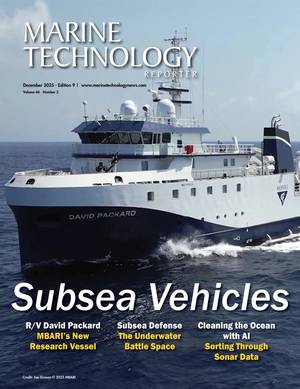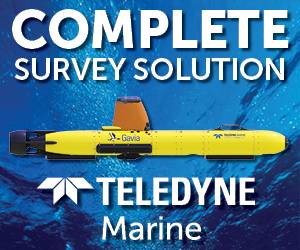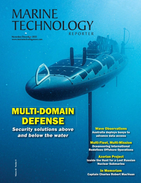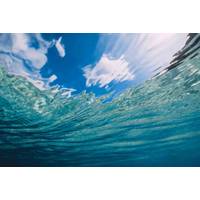
Chemical-Consuming Creatures Found Deep in Pacific Trenches
Nature."Unlike isolated pockets of organisms, this community thrives like a vibrant oasis in the vast desert of the deep sea," Du added.While some marine animals have been documented at even greater depths, nearly 11,000 meters (36,000 feet) below the surface in the Pacific's Mariana Trench, Du said, those were not chemical eaters.In the new research, the scientists used their submersible, called the Fendouzhe, to journey down to what is called the hadal zone. The hadal zone is where one of the continent-sized plates that make up Earth's crust slides under a neighboring plate
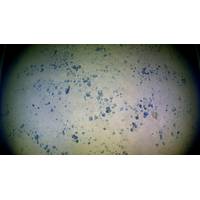
New AUV Helps Document Critical Minerals
An autonomous underwater vehicle (AUV) has imaged a previously unexplored portion of the seafloor in ultra-deep waters near the Mariana Trench.Built by New England-based startup Orpheus Ocean, the small-footprint AUV is advancing understanding of some of the planet’s least explored regions at water depths up to 11,000 meters (6.8 miles).Operationalizing the technology for the first time was part of a mission led by the Ocean Exploration Cooperative Institute (OECI), based at the University of Rhode Island’s Graduate School of Oceanography, with support from the National Oceanic and Atmospher

MTS, SUT to Honor Marty Klein with Capt. Don Walsh Award for Ocean Exploration
son’s memory and supporting future ocean professionals. Upon receiving the news of the award, Marty said, “I am humbled and honored. When I was a student at MIT, I read with fascination the Life Magazine cover story about the historic deep dive to 35,813 feet in the Challenger Deep/Mariana Trench by Jacques Piccard and Don Walsh in the Bathyscaph Trieste. Little could I know that three years later, just as I was beginning my career, the nuclear submarine USS Thresher would sink, the Trieste would be called from San Diego to assist the project, and I would become intimately involved in
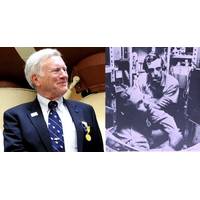
In Memoriam: Captain Don Walsh
Technology released a statement saying: “Don Walsh will forever be remembered as a pioneer in exploration and especially for his famous first, when he and Jacques Piccard piloted the bathyscaphe Trieste to the deepest point in the world’s ocean with their dive to the bottom of the Mariana Trench in 1960. He will also be remembered for his lifetime of contribution to ocean technology.“But for those that had the honour of knowing him, he will most be recalled for his humility, kindness and generosity. A true renaissance man and someone whose attributes we should all strive to emulate
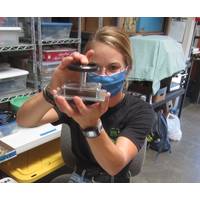
MTR100: Underwater Cameras, Lights and Ocean Landers
views using the mobility of the vehicle itself. Landers can be made to pirouette on the seafloor, rotating up to 720°, to capture an entire panorama of its landing site. This was dramatically shown during James Cameron’s DEEPSEA CHALLENGE Expedition with DOV MIKE in the Sirena Deep of the Mariana Trench in 2012.ExperimentationLandereans can inexpensively explore camera systems by building their own. The path to discovery and understanding can begin with a simple system based on a board camera or POV (Point-of-view)/Action camera, such as a GoPro. Keep It Simple, Sailor (KISS). Start with the
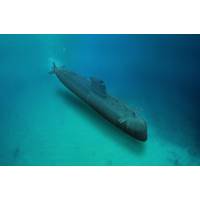
U.S. Revives Cold War Submarine Spy Program to Counter China
. China is also building a fleet of underwater and surface sea drones to scour for enemy submarines, the two people said.The Chinese push extends far into the Pacific. The state-run China Academy of Sciences said in 2018 it was operating two underwater sensors: one in Challenger Deep in the Mariana Trench, the deepest known point on earth; the other near Yap, an island in the Federated States of Micronesia. Though China says these sensors are used for scientific purposes, they could detect submarine movements near the U.S. naval base on Guam, a Pacific island territory, the Navy sources said
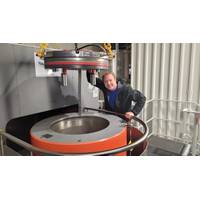
LUMA X-UV Passes 1200 Bar Pressure Test, Hydromea says
Hydromea reports it has as achieved validation for its underwater optical modems, LUMA X-UV, in Germany's Nautilus lab. With a certification at 1200 bar of pressure, equivalent to depth of 12,000 meters in the ocean, Hydromea's LUMA X-UV modems have surpassed previous limits.The Mariana Trench, the deepest point on Earth measuring 10,994 meters, has been an immensely challenging destination to explore due to extreme pressure reaching 1100 bar. Very few expeditions have dared to venture to these depths, limited by the scarcity of suitable equipment. Recognizing this need, one of Hydromea'
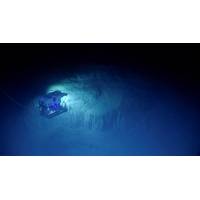
They Say We Know More About the Moon Than About the Deep Sea. They’re Wrong
yet more is known about the shape of the surface of the moon than is known about that of the bottom of the ocean”. This refers specifically to the scant amount of data available on the topography of the sea floor and predates both the first crewed descent to the deepest part of the ocean, the Mariana Trench (1960), and the first Moon landing (1969).This quote also predates the practice of using ship-mounted echo-sounders to map the sea floor from acoustic data, known as swathe bathymetry.Almost a quarter of the world’s sea floor (23.4%, to be precise) has been mapped to a high resolution.
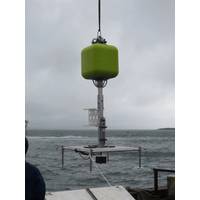
Lander Lab #4: Underwater Releases
action such as deploying a drop arm, closing a water sampler or animal trap, or releasing a surface buoy or hydrophone string.A clever at-sea adaptation of timer releases was reported by Scripps researchers Mantyla and Reid in 1977. Making measurements of salinity, oxygen and silicates in the Mariana Trench, they found the tapered wire rope on the hydrographic winch was of insufficient length to reach below 10km. Engineer Dave Muus proposed modifying a John Issacs “Monster Camera” free vehicle, a chain of components more like a short mooring than an ocean lander, to carry a string
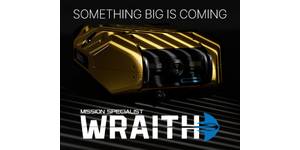
 December 2025
December 2025
